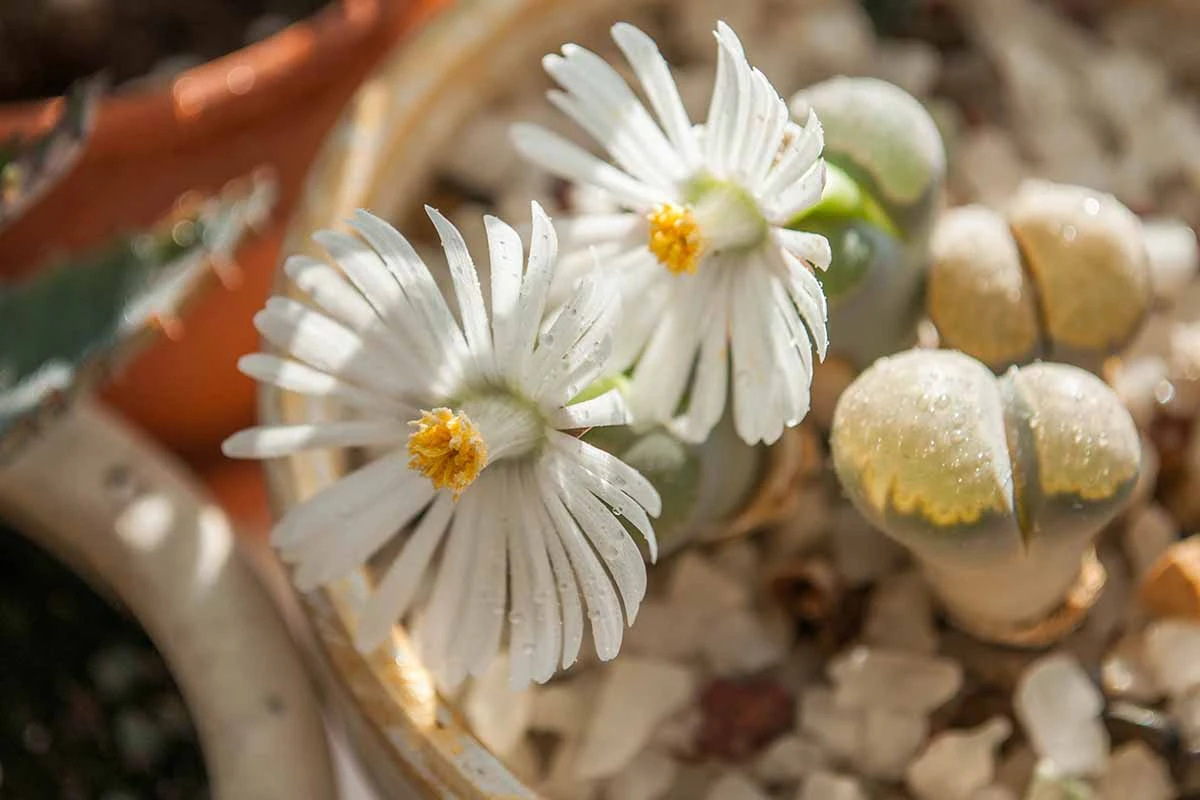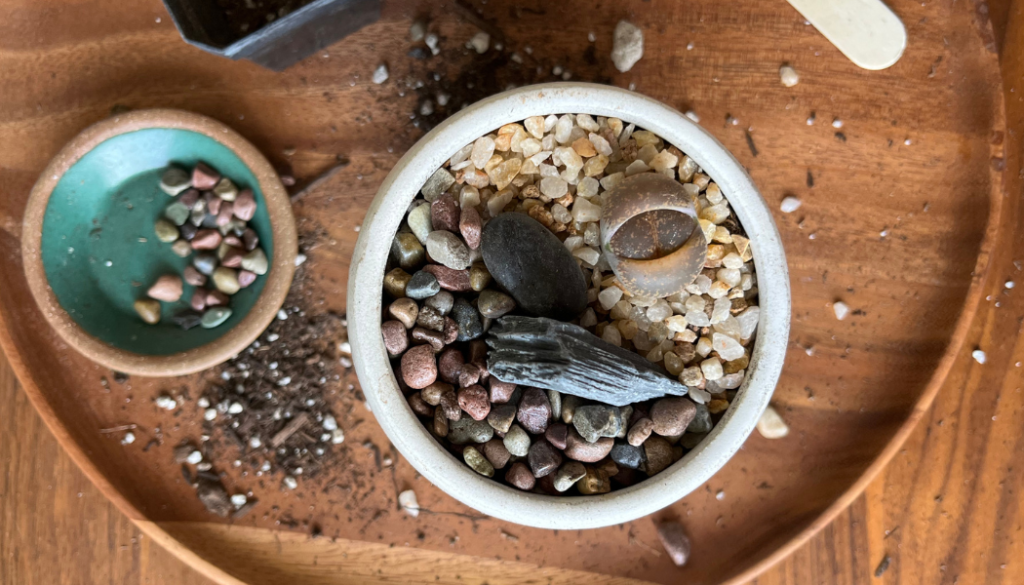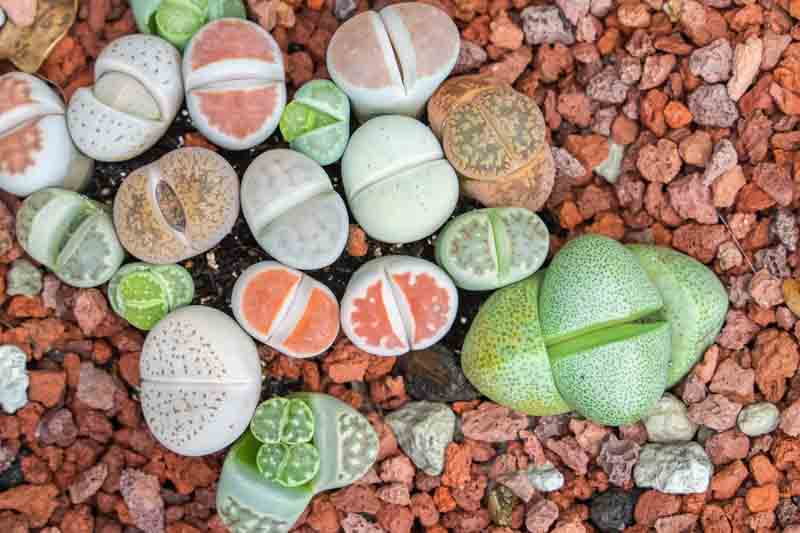Care Guides
Ultimate Guide to Lithops Care: Keep Your Living Stones Thriving
Have you ever bought a lithops plant, those cute little “living stones”, only to watch it wrinkle, split, or even rot away? You’re not alone. When I got my very first lithops, I thought, “Great, another succulent! Easy care, just like my jade plant or echeveria.” But within weeks, it looked like a sad raisin and eventually died.
Here’s the truth: lithops don’t play by the same rules as other succulents. They’re survivors from some of the driest deserts in the world, and they’ve evolved in a way that tricks even seasoned gardeners. If you’ve struggled with lithops care before, it’s not because you have a “black thumb.” It’s because these pebble plants follow their own rhythm.
The good news? Once you understand their cycle, they’re actually some of the easiest, most rewarding plants you’ll ever grow. Let me take you through everything you need to know, step by step, so your lithops can thrive for decades.
Why Lithops Are Different
Lithops are masters of disguise. In the wild, they grow in rocky desert regions of South Africa and Namibia, where rainfall is scarce and predators are always on the hunt for something green to snack on. To survive, lithops evolved to look like stones—camouflaging themselves among pebbles.
Each “stone” is actually a pair of thick, fleshy leaves fused together. At the top, you’ll see a translucent area called a leaf window. This isn’t just for looks—it lets sunlight penetrate deep inside so the plant can photosynthesize without exposing much surface area to the harsh desert sun.
But what really sets lithops apart is their growth cycle:
-
Fall: Lithops produce their famous daisy-like flowers, often white or yellow, which can last for a week or more.
-
Winter to Spring: New leaves begin to grow inside the old ones. As they expand, they split the outer leaves open. Eventually, the old pair dries up and disappears.
-
Summer: Lithops go into dormancy to survive extreme heat. They stop growing, conserve energy, and wait for cooler weather.
That cycle flips the “normal” houseplant schedule upside down. If you treat lithops like other succulents—watering during summer or fertilizing year-round—they’ll struggle.
Light and Placement

Lithops are sun-lovers. Without enough light, they lose their compact shape and start stretching, a problem gardeners call etiolation.
When I first moved my lithops indoors during winter, I placed them on a north-facing windowsill. Within weeks, they grew tall, pale, and weak. I learned the hard way: they need bright light to stay healthy.
Here’s what works best:
-
South-facing window: Ideal in most U.S. homes. West-facing can also work if you monitor heat.
-
Supplemental grow lights: If you live in a northern state with long, dark winters, invest in a good LED grow light. Place it 6–8 inches above the plant and keep it on for 12–14 hours daily.
-
Outdoor summering: If your climate allows, move them outdoors in spring and fall. Just acclimate slowly to avoid sunburn.
Tip: If your lithops start leaning toward the light or growing taller than usual, that’s your cue they need more sun.
Watering Schedule by Season
Watering lithops is the number one reason people fail. It feels counterintuitive to let them sit for months without a drop of water—but that’s exactly what they need.
Think of lithops like camels: they store water in their thick leaves. Too much water, and they drown. Too little, and they simply pause growth until the rains return.
Here’s a seasonal breakdown:
Fall (active growth + flowering):
-
Water sparingly, about once every 2–3 weeks.
-
Always let the soil dry completely before watering again.
-
If flowers appear, enjoy them—but don’t increase watering.
Winter to Spring (leaf replacement):
-
This is the tricky part. As new leaves grow inside, the old leaves must shrivel away.
-
If you water during this stage, the old leaves won’t dry up and your plant may rot.
-
No water. Seriously.
Late Spring (post-split, new leaves mature):
-
Resume light watering only if the new leaves look wrinkled or sunken.
Summer (dormancy):
-
Stop watering again. Lithops are conserving energy.
-
At most, give a teaspoon of water once a month if you live in an extremely dry climate, but most growers skip it entirely.
Remember: lithops would rather go thirsty than drown.
Soil, Pots, and Drainage

In their natural habitat, lithops grow in sandy, rocky soil that drains in seconds after rain. To replicate that at home, your soil must be gritty.
-
Best soil mix:
-
60% pumice, coarse sand, or small gravel
-
20% perlite
-
20% cactus potting mix
-
-
Avoid: Peat moss or regular houseplant soil, it holds too much water.
-
Pot choice: Use shallow pots with drainage holes. Lithops don’t have huge root systems, but they do send down a taproot, so make sure the pot is at least 3–4 inches deep.
I once tried planting lithops in a decorative glass terrarium. It looked amazing for two weeks, then the bottom stayed soggy, and the plants rotted. Lesson learned: always prioritize drainage over aesthetics.
Fertilization and Repotting
Lithops aren’t heavy feeders. In fact, too much fertilizer can encourage weak, watery growth.
-
Fertilizer: Use a diluted cactus fertilizer (low nitrogen) once a year in fall or spring. Think of it as a vitamin boost, not a meal plan.
-
Repotting: Every 3–4 years is enough. Lithops grow slowly, so they don’t outgrow pots quickly. Repot in late spring after the new leaves have matured.
Repotting is also a great time to check roots for rot and refresh the soil mix.
Common Problems and How to Fix Them
Even with perfect care, lithops can confuse you. Here’s how to troubleshoot:
-
Wrinkled leaves: This can be normal if they’re shedding old leaves. But if it happens out of season, give a small drink of water.
-
Soft, mushy leaves: Classic sign of overwatering. Stop immediately, check roots, and let the plant dry out.
-
Elongated, stretched growth: Not enough light. Move to a sunnier spot or add a grow light.
-
Cracked or uneven splits: Usually caused by watering at the wrong stage. Stick to the seasonal schedule.
One of my gardening friends once panicked when her lithops wrinkled. She soaked the pot, hoping to “revive” it. The plant turned to mush within days. The truth? Wrinkling can be a natural part of the cycle. Patience is key.
Real-Life Tips from Gardeners
Over the years, I’ve collected advice from other lithops growers:
-
“Treat them like pets on a diet—feed and water less than you think.”
-
“Mark your calendar with watering reminders by season. It helps avoid accidents.”
-
“If in doubt, don’t water. They’ll forgive dryness but never drowning.”
These little mottos might save you from heartbreak.
Frequently Asked Questions
How often should I water my lithops?
Only during fall and spring growth phases. Stop completely when they split or go dormant.
Why are my lithops wrinkled?
It could mean they’re finishing a growth cycle. Don’t rush to water unless it’s the right season.
What soil mix is best for lithops?
A gritty, fast-draining mix with pumice, sand, and perlite. Avoid moisture-retaining soil.
Can lithops grow indoors year-round?
Yes, if you provide enough bright ligh, ideally a sunny window or grow light, and follow their seasonal care schedule.
Conclusion
Lithops may look intimidating at first, but once you “speak their language,” they’re some of the most rewarding succulents you’ll ever grow.
Here’s what to remember:
-
Give them bright light.
-
Respect their seasonal cycles.
-
Use gritty, well-draining soil.
-
Water sparingly; less is more.
When cared for properly, lithops can live for decades, producing cheerful flowers and fascinating new leaves year after year.
If you’re ready to expand your succulent collection, check out my guides on:
-
Best soil mixes for succulents
-
Understanding succulent dormancy
-
Rare succulents every collector should try
Lithops aren’t just plants, they’re living puzzles. Once you solve the mystery, you’ll fall in love with them just like I did.

